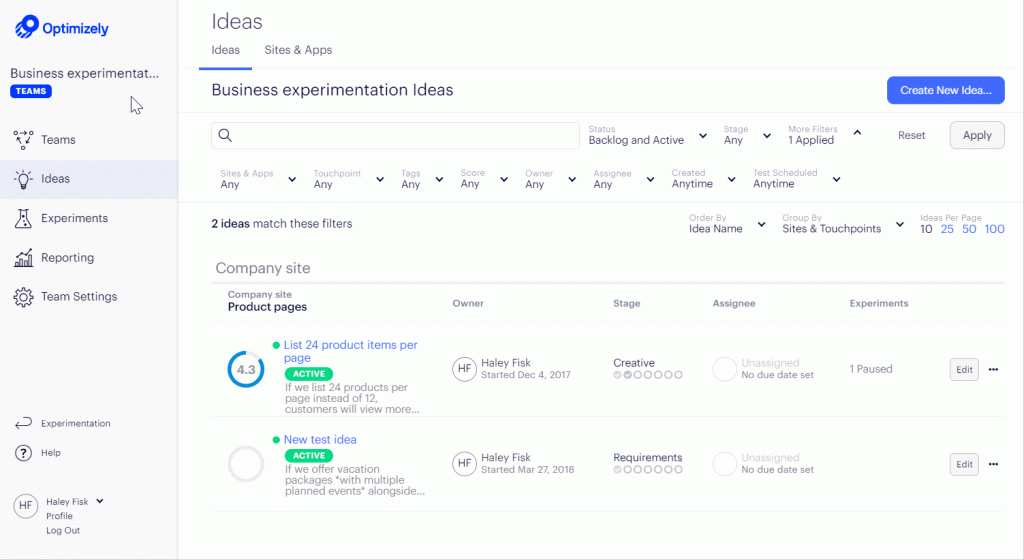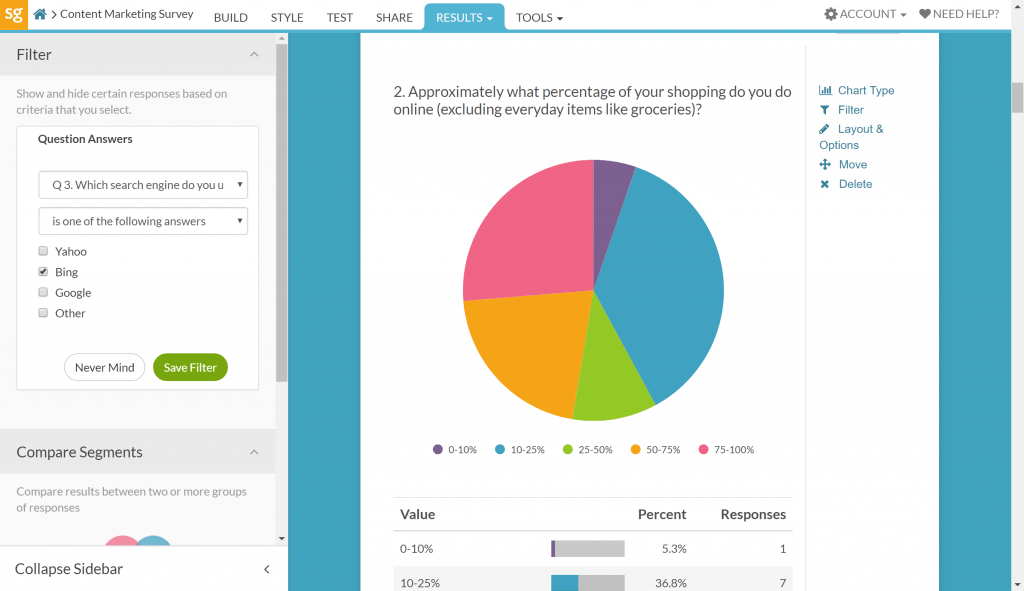Nowadays we expect every business to have a website. In fact, a study conducted in 2017 found that 30% of consumers won’t even consider purchasing goods or services from a company if they don’t have a website; even if they have other social media pages that outline what their business does. This figure is likely to be even higher if the same study was conducted today and shows just how important a functional and attractive website is to a business, no matter how big or small.
Part of running a successful website that helps drive your business forward is measuring its performance. That said, this is no mean feat. Some larger businesses even hire whole teams of professionals to monitor their websites and keep improving them. But as previously stated, size isn’t important, whether you’re a growing business or an individual trader, you need to know how to measure the performance of your website effectively to ensure the best results for your company.
The guide below is going to take an in-depth look at why this is so important, exploring what metrics you need to be measuring and how to do this. It will also look at how KPIs should guide you and other tools you can use to help you keep track of your website’s progress. Read on to find out how to effectively measure your website’s performance.
Why you need to measure your website’s performance
The main reason you need to measure your website’s performance is to ensure that it is having the desired effect, whether that’s getting people to buy your goods or services, encouraging people to engage with your brand or helping to spread your message. Your website is your chance to showcase your products, make sales, generate leads and sell your brand to consumers.
By measuring and analysing metrics such as traffic, bounce rates, goals and conversions, you can map the user journey through your site and find out how and why people are using your website. This will help you to see if there’s anything you can improve and how to truly make the most of your website so that it helps your business to progress.
Using KPIs to help measure performance
Nowadays there are so many platforms and tools being used to gather data that this can become overwhelming and distracting. For this reason, it’s best to focus on the KPIs of your business to help you measure your website’s performance. If you’ve not heard this term before, KPIs are your Key Performance Indicators. These are the goals you set for yourself and the metrics that determine the success of a business.
For example, if one of your KPIs is to generate more leads through your website, you might want to look at traffic to the site and the time each visitor spent on your page. This way you can work out if people are engaging with your brand and products. By having your KPIs in mind at all times, you’ll be able to decide which metrics are most important to your business and how you can measure the performance of your site as a result.
One thing worth noting is that you may have more than one KPI. Measuring the performance of a website can be a full-time job! There are so many aspects to get just right, like you might want to increase sales, but also improve the content you post on your blog. For this reason, it is entirely possible that you may have a range of goals in mind and will therefore use a number of different tools to measure the success of your site.
Which tools are best for measuring performance?
Now we’ll look at the most popular tools for measuring your website metrics. There are a number of ways you can measure website performance and a number of platforms you can use to do it. We’ll look at each of these in detail below, then we’ll outline the best tools to use based on your KPIs.
One of the most useful tools out there is Google Analytics, as this can be used to measure a huge range of metrics. You may or may not already have this set-up, if not then you should it’s straightforward and provides a wealth of information.

Another important way to measure website metrics is through your CRM (Customer Relationship Management). There are a number of platforms you can use for this such as Zoho or Microsoft Dynamics, or you can even create your own CRM if you have the resources to do so. After this, you might also use ATSs (Application Tracking Systems) or usability testing tools such as Optimizely.

Source: www.optimizely.com
There are also some much simpler ways you can measure the performance of your website. You can use online surveys such as Survey Gizmo, to ask your customers or users for feedback. You can also use basic platforms such as Microsoft Excel for logging and analysing data.

Source:uk.pcmag.com‘
This is a very brief introduction to these platforms, but if you’re unsure which tools are best for your business there are a number of guides out there which outline the best services to suit your needs. If you’re unsure how to use these tools you can take online courses which will guide you through, for example there are a number of great Google Analytics training courses online. You can also ask for training from the service provider.
What to measure and how best to do it
In this section we’ll look at what metrics to measure based on the different KPIs that your business might be focusing on. It’s so important that you don’t waste your time focusing on shallow or weak metrics that really have no impact on the success of your business.
What we mean by this is that it’s senseless stressing about traffic and/or followers, if none of this helps you increase your conversion rates. Below we’ll look at each KPI individually outlining which metrics are best for tracking the performance of your website and why you need to invest time in monitoring your site in this way.
- KPI: Generate more high-quality leads
It’s all well and good driving traffic to your site and creating potential leads, but if these are what we call ‘low quality leads’ that are unlikely to convert to an actual sale or positive interaction then you could be wasting your time. Instead, using your chosen CRM you can track the quality of leads you’re driving to the site and keep track of how many high-quality visitors you have.
Then, using marketing techniques you can work to improve the quality of these leads, ultimately resulting in a more effective website which is actually helping to drive your business forward.
- KPI: Increase brand awareness
If increasing brand awareness is important to you, there are a number of metrics you can use to monitor this. Firstly, there’s a lot you can learn from Google Analytics about whether or not people are engaging with your brand. Look at average time on page, particularly if you have a blog or share useful content online. From these metrics you can determine if people are reading it and getting real value from it.
Another thing you can do is put out a survey to both existing and prospective visitors asking about your brand. Using sites like Survey Monkey you can find out how much people know about your company, what they think of your branding and whether they’ve ever purchased your goods or service before. From this you can decide if you need to update your site or give your branding a makeover.
- KPI: Generate more sales
Are you hoping to boost your revenue through your site? When it comes to monitoring sales made through your website, Google Analytics is going to be your best friend. Use this to look at E-commerce, revenue, completed goals, product performance and average orders. Armed with this knowledge you’ll be able to better understand whether your website is effective for making sales and this can help you to increase conversion rates. It can also push you to update your site if you’re not generating the sales you need.
- KPI: Improve conversion rates
Conversion rates are when visitors to your site take the desired action you’ve set out for them, be that signing up to your newsletter, filling in a contact forms so you can reach out to them or purchasing your goods or services. In order to monitor conversion rates, you’ll need to use Google Analytics to analyse visitors, traffic and most importantly, your goal rate.
This allows you to look at how many visitors actually convert to a sale or complete your desired action. Once you know this you can begin looking into why some customers leave the site or fill their basket but don’t make a final purchase. Armed with this information you can make changes to help your site perform better.
- KPI: Improve customer satisfaction levels
Customer satisfaction is the key to a successful business. And one of the best ways to measure the performance of your website, and to work out how you can improve it for your customers, is simply to ask them. Using survey tools, you can ask your visitors what they do and don’t like about the site and put real changes in place. This can be one of the most effective ways of improving customer satisfaction levels because you are taking their feedback on board directly and making the changes they want to see.
- KPI: Improve web content
Another one of your key priorities may be generally improving the content on your website and blog (if you have a blog connected to your site). When it comes to monitoring how your website is performing in regard to your content, you have a few options. Google Analytics can be helpful for looking at bounce rates and how long people are spending on your pages. If it’s not long this could be an indicator that your content isn’t good enough.
You could also send out a survey to ask customers/visitors what they’d like to see on your website. This way you can create content that offers real value to them. Finally, you can invest in usability testing tools to find out whether people are engaging with your web content, what is popular and if there’s any content that gets more views than others. Great content is crucial for a successful website and business, so it’s best to measure your performance on this front and ensure all web copy is up to scratch.
- KPI: Reduce time to complete tasks
In today’s world we’re used to everything being almost instant. Because of this people don’t like to wait too long for pages to load and they don’t want a difficult and time-consuming journey when trying to use a website. This means if it takes too long for them to complete the desired action then they’re likely to leave your site.
One important part of monitoring the performance of your website is making sure that your visitors aren’t kept waiting. You can do this by using Google Analytics to look at time on page or bounce rates. You can also make the most of usability testing tools to record user sessions. This can help you work on reducing the time it takes visitors to complete tasks on your website.
In summary
There is certainly a lot to take in when it comes to effectively measuring the performance of your website. You need to make sure you’re focusing on the right metrics and that these reflect your KPIs, so you’re better able to improve the performance of your site. You also want to make sure it is as user friendly as possible and that visitors trust your website and want to engage with your brand. But again, you need to choose the right metrics to be able to do this.
In this guide we’ve outlined some of the best ways to measure the performance of your website based on some of the most common KPIs. It’s vital that you’re careful not to fall into the trap of tracking weak metrics that won’t help you to achieve your overall business goals. Using the examples above as guidelines, you can understand how to best analyse and measure the data and performance of your website.



